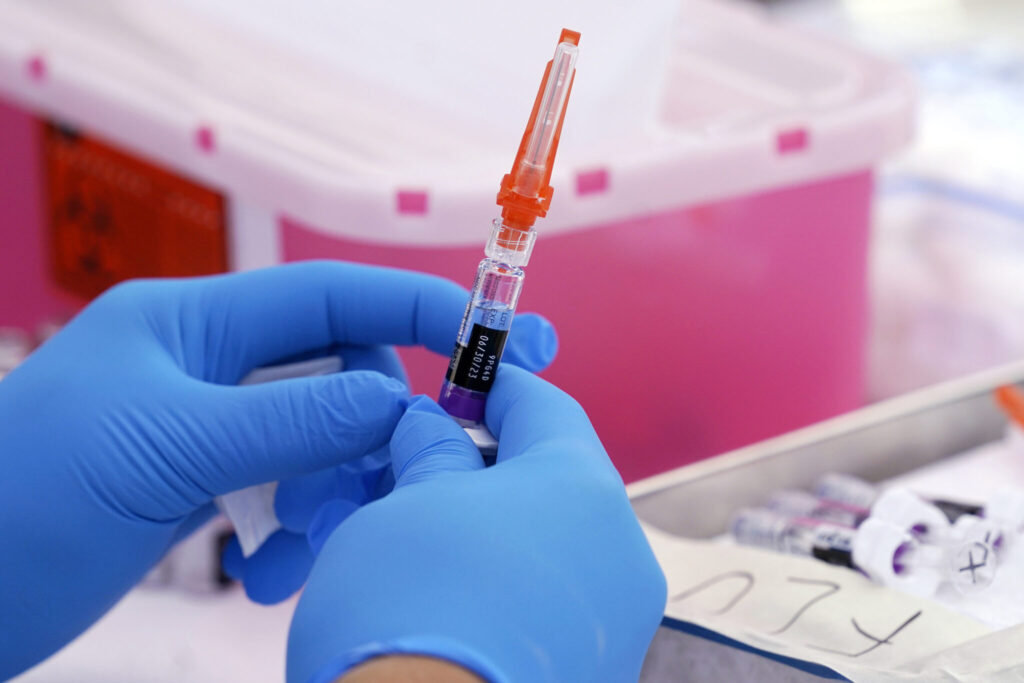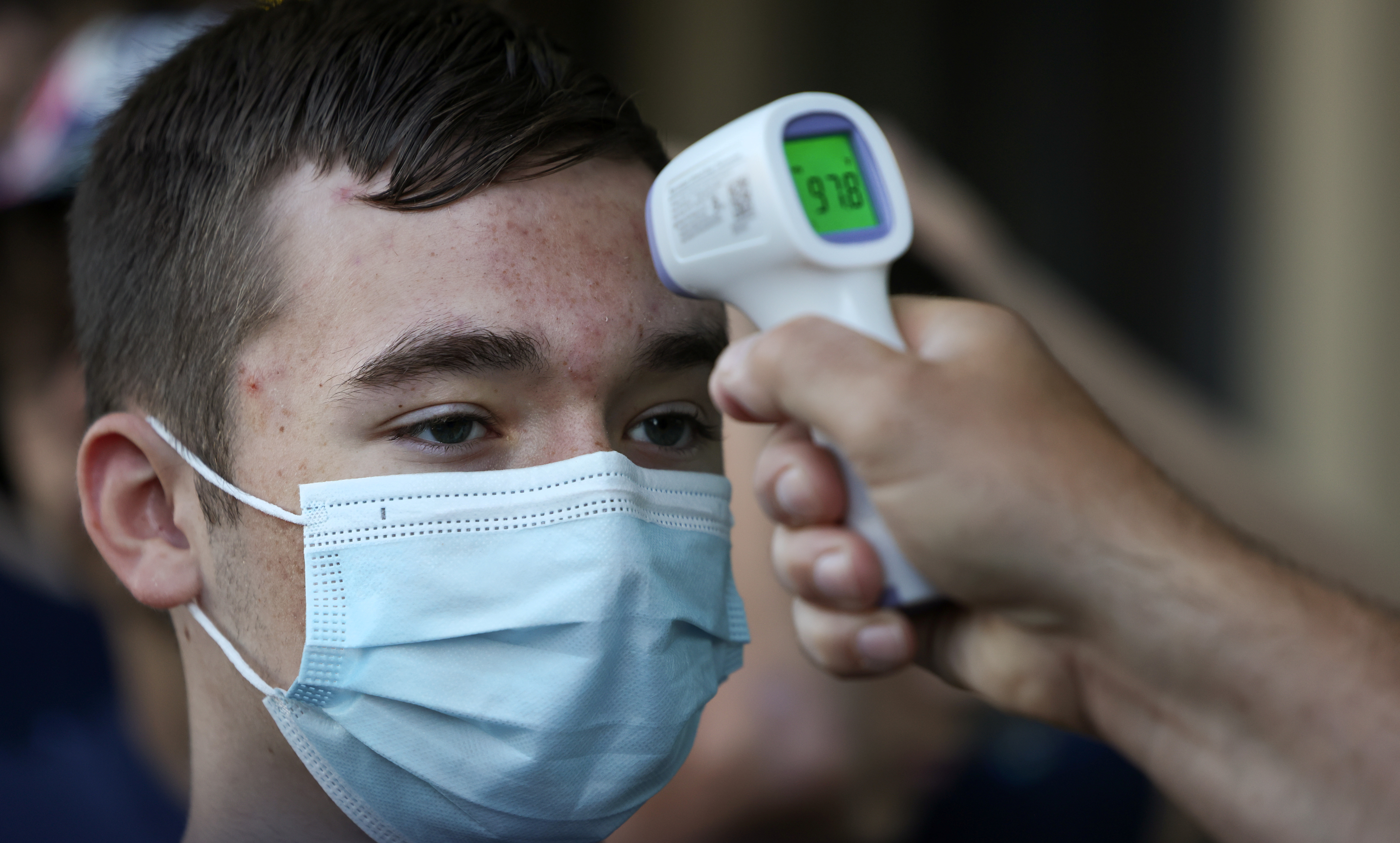U.S. health officials are anticipating an increase in flu and COVID-19 infections in the coming weeks, influenced by several factors, including holiday gatherings, a large number of unvaccinated individuals, and a new coronavirus variant.
Quick Read
Key points from the health officials’ updates:
- Rise in Flu-Like Illnesses: The CDC reported a spike in flu-like illnesses in 17 states, an increase from 14 the previous week.
- Travel and Family Gatherings: Increased travel and family gatherings during the holiday season are contributing to the spread of viruses.
- New Coronavirus Variant JN.1: A coronavirus variant known as JN.1, part of the omicron family, was first detected in the U.S. in September. It currently accounts for about 20% of cases and is expected to rise to 50% in the next two weeks. This variant may spread more easily but isn’t believed to cause more severe disease than other recent variants.
- Effectiveness of Vaccines and Antivirals: Current vaccines and antiviral medications are reportedly effective against the new JN.1 variant.
- Flu Vaccine Match and Efficacy: The flu vaccines available this season appear to be well-matched to the most prevalent flu strain, which typically causes fewer deaths and hospitalizations than other strains.
- Decline in Vaccination Rates: Vaccination rates for the flu are lower this year compared to last year. Additionally, uptake of the updated COVID-19 vaccine and shots against other respiratory viruses like RSV is also low.
- CDC’s Health Alert: The CDC has issued a health alert to U.S. doctors, urging them to vaccinate patients against these viruses.
- Regional Impact: The Carolinas are currently experiencing the highest rates of respiratory infections, with some patients facing delays in getting hospital beds.
- Potential for Worsening Situation: There is concern that the situation could worsen in the next four to eight weeks, especially if colder weather increases.
Health officials stress the importance of vaccination and continue to monitor the situation closely.
The Associated Press has the story:
CDC: JN.1 variant accounts for 39%-50% of COVID cases in US, could get worse over holidays
Newslooks- NEW YORK (AP)
Look for flu and COVID-19 infections to ramp up in the coming weeks, U.S. health officials say, with increases fueled by holiday gatherings, too many unvaccinated people and a new version of the coronavirus that may be spreading more easily.
High levels of flu-like illnesses were reported last week in 17 states — up from 14 the week before, the Centers for Disease Control and Prevention said Friday.
“Folks are traveling a lot more this season. They want to see their families,” said the CDC’s Dr. Manisha Patel. “And all of that sort of adds to the mix” in the spread of viruses.
Health officials are keeping an eye on a version of the ever-evolving coronavirus, known as JN.1. The omicron variant was first detected in the U.S. in September and now accounts for an estimated 20% of cases. The CDC expects it to reach 50% in the next two weeks, Patel said.
It may spread easier or be better at evading our immune systems, but there is no evidence that the strain causes more severe disease than other recent variants, health officials say. And current evidence indicates vaccines and antiviral medications work against it.

As for flu, early signs suggest current vaccines are well-matched to the strain that is causing the most illnesses, and that strain usually doesn’t cause as many deaths and hospitalizations as some other versions.
But the bad news is vaccinations are down this year, officials say. About 42% of U.S. adults had gotten flu shots by the first week of December, down from about 45% at the same time last year, according to the CDC.
Americans have also been slow to get other vaccinations. Only about 18% have gotten an updated COVID-19 shot that became available in September. At nursing homes, about a third of residents are up to date with COVID-19 vaccines.
And only 17% of adults 60 and older had received new shots against another respiratory virus. RSV, respiratory syncytial virus, is a common cause of mild coldlike symptoms but it can be dangerous for infants and older people.
The CDC last week took the unusual step of sending a health alert to U.S. doctors urging them to immunize their patients against the trio of viruses.
The Carolinas are currently seeing the heaviest traffic for respiratory infections in emergency rooms, according to CDC data posted this week.
It’s not as dire as some past winters, but some patients are still waiting days to get a hospital bed, noted Dr. Scott Curry, an infectious diseases specialist at the Medical University of South Carolina in Charleston.
“We’ve barely been cold in South Carolina, and flu tends to hit us very hard when people actually get some cold weather to deal with,” he said. “We could get worse, very easily, in the next four to eight weeks.”
CDC says JN.1 variant accounts for 39%-50% of COVID cases in US
Newslooks- (Reuters) –
The U.S. Centers for Disease Control and Prevention (CDC) said on Friday that COVID subvariant JN.1 accounts for 39% to 50% of cases in the United States as of Dec. 23, according to the agency’s projections.
This is an increase from the estimated 15% to 29% of cases in the United States, the CDC had projected as of Dec. 8.
The CDC said the variant continues to cause an increasing share of infections and is now the most widely circulating variant in the country.

The continued growth suggests the variant is either more transmissible or better at evading immune systems than other circulating variants, it added.
It is too early to know whether or to what extent JN.1 will cause an increase in infections or hospitalizations, the CDC said, adding that existing vaccines, tests, and treatments still work well against it.
On Tuesday, the World Health Organization classified JN.1 as a “variant of interest” and said current evidence shows risk to public health was low from the strain.






